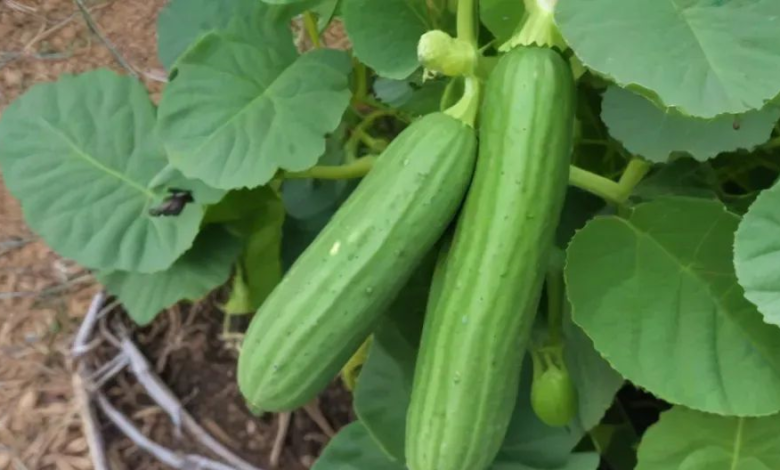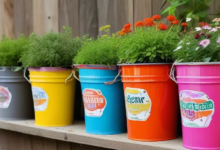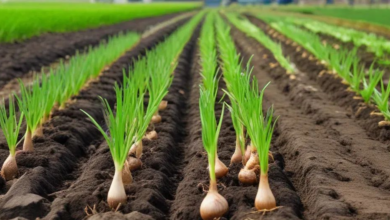The Perfect Companions for Cucumbers and Their Benefits
Elevate your cucumber patch with strategic companion planting.

In companion planting, two plants are deliberately placed next to each other in an effort to boost growth, flavor, and pest resistance. Choose your cucumber companions wisely to encourage healthy growth, boost harvests, and build a more robust garden ecology. To help you achieve garden harmony and abundance, this article will discuss a number of cucumber companion plants and the benefits they give.
Companion Plants for Cucumbers:
Tomatoes
Because they compliment one other’s development tendencies and have similar growing requirements, cucumbers and tomatoes make great companions. Cucumbers help keep pests like tomato hornworms at bay, and tomatoes offer natural shade and support for cucumber vines. You may make the most of your garden area and get more produce by planting cucumbers and tomatoes together.
Nasturtiums
Nasturtiums are perfect for cucumbers because they keep pests like aphids, cucumber beetles, and squash bugs at bay. You may prevent cucumber plants from harm and cut down on pesticide use by planting nasturtiums around them. Nasturtiums not only look beautiful, but they also bring in important insects that help keep your garden healthy.
Radishes
Root crops like radishes grow quickly and can loosen heavy soil, making it better for cucumber plants. If you want to make the most of your garden bed area and encourage healthy root development and nutrient uptake, interplant cucumbers with radishes. To further protect cucumber plants from pests like cucumber bugs, radishes can be planted alongside them.
Beans
Beans, being nitrogen-fixing legumes, add vital nutrients to the soil, especially nitrogen, which cucumbers need to flourish. Soil fertility and plant health are both enhanced when cucumbers and beans are planted together. Beans also act as a natural trellis for cucumber vines, which means less support structures are needed and more vertical space is made use of in the garden.
Marigolds
The ability of marigolds to ward against pests, especially nematodes, aphids, and whiteflies, has earned them widespread renown. If you want to keep pests at bay and your cucumber plants safe, plant some marigolds around them. Ladybugs and parasitic wasps, two helpful insects, are drawn to marigolds. These wasps feed on pests that commonly attack cucumbers, making the garden more resilient as a whole.
Corn
The cucumber vines can climb and expand vertically in a garden with the help of corn, which acts as a natural trellis. Corn and cucumbers form a mutually beneficial connection when planted in close proximity to one another, making efficient use of available space. Also, corn is a windbreak, so it shields cucumber plants from severe winds and lessens the likelihood that they will be damaged.
Benefits of Companion Planting for Cucumbers:
- To Keep Pests At Bay: Nasturtiums, marigolds, and radishes are great companion plants for cucumbers because they ward off common pests while also making your garden a better place overall.
- The nitrogen-fixing companion plants, such as radishes and beans, improve the soil’s health by adding vital nutrients, which in turn encourage robust cucumber development and general plant vitality.
- Yield Enhancement: By strategically placing companion plants in your garden bed, you may make the most of the available space, encourage healthy development, and minimize resource rivalry, all of which contribute to increased yields.
- Cucumbers get a flavor boost when grown alongside certain companion plants, such as tomatoes and beans, which makes for a more appetizing end product.
Conclusion
Cucumbers can reap many benefits from companion planting, including reduced insect populations, healthier soil, higher yields, and better flavor. Your cucumber patch can thrive in peace with nature if you take the time to learn about its inhabitants and the parts they play in the garden ecology. Find out what works best for your garden by experimenting with different companion plant combinations. Then, relish in the abundant harvests that come from a balanced planting design.
FAQ’s
What is the best support for cucumber plants?
Trellis your vines if you are able to. As a bonus, it conserves space and keeps the fruit clean. A cage with a diameter of 12–18 inches and constructed from 4- or 5-foot welded wire fence or hog wire can accommodate two or three vines. As climbing cucumbers develop, their tendrils find wire to be an accessible target.
What not to plant next to cucumbers?
While sage and rosemary are great culinary herbs, they actually stunt cucumber development. Because of the natural oils they contain, they can reduce the rate of cucumber plant development. Broccoli, cabbage, and cauliflower are brassicas that can compete with cucumbers for soil minerals.
What is the best feed for cucumber plants?
Fertilize your cucumber plants once a week with a high-potash fertilizer, like a liquid tomato food, once they begin to bloom. Cucumbers should be harvested when they are ripe.
How to help a cucumber plant?
Taking Care of Plants. Growing cucumbers well requires a warm environment and consistent watering, regardless of whether you’re using a cold frame, polytunnel, or greenhouse. Additionally, they require more watering and food when grown in pots.
Does calcium help cucumber plants?
Fruits treated with calcium maintain their firmness and have higher vitamin C content after processing [8]. Application of calcium chloride to cucumber leaves improved the plant’s height, dry weight, and number of leaves, all of which are growth parameters.




